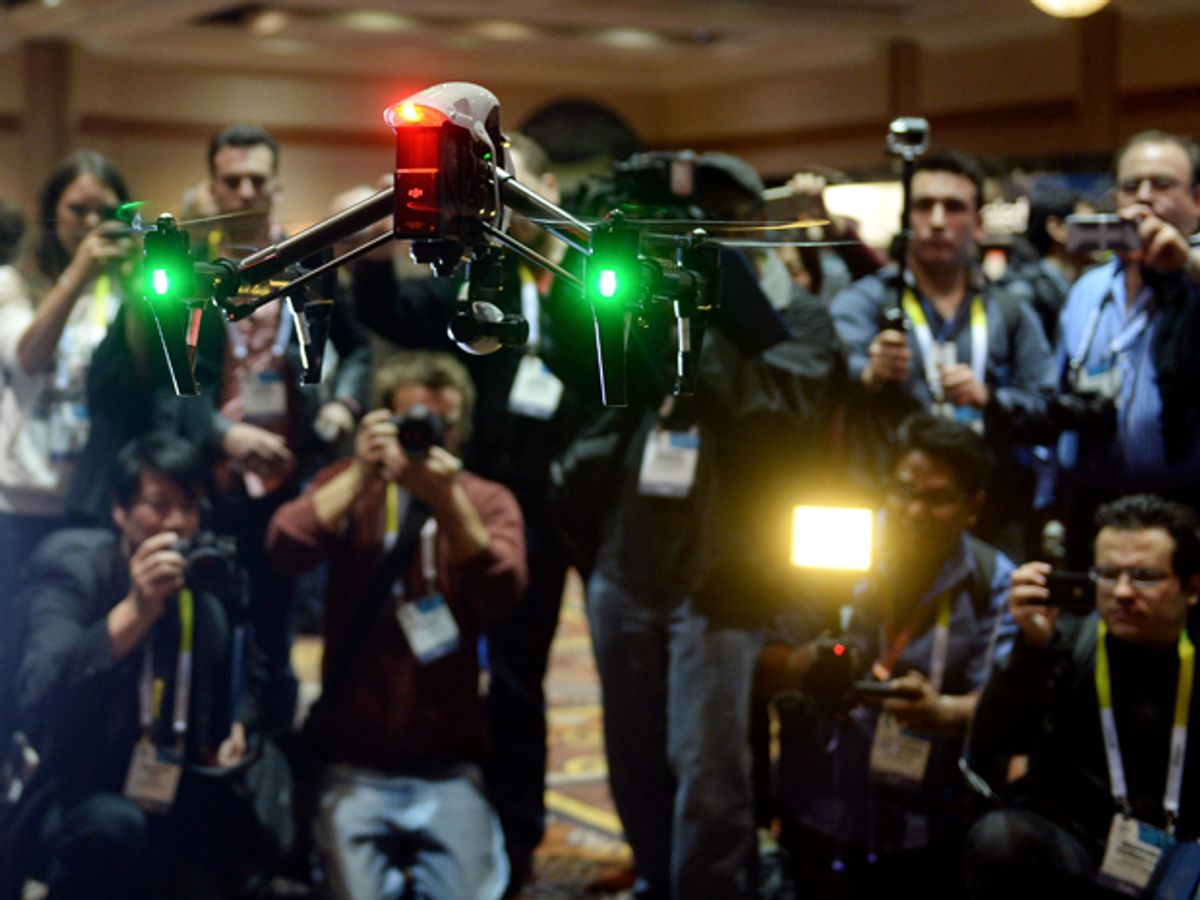Consumer electronics, as seen through the lens of the Consumer Electronics Show, goes in cycles. They usually begin with the introduction of a new product that makes a huge splash (think of the first Sony Walkman or the original Fitbit tracker). Then, as a single product becomes a category, along come a wave of related items from other companies, which range from inferior clones to clever and innovative upgrades. Finally, the technology matures and becomes somewhat standardized, and the category effectively becomes the infrastructural platform for the next wave of ground breaking innovation. At this year’s CES, with no obvious breakout hits poised to establish new categories, it looks like we’re in the later phases of the cycle.
Much attention is focused on laying the ground work that will enable the next cycle. Everyone figures the Internet of Things is coming in a big way, so there’s a lot of discussion about what technologies are going to be used under the hood to facilitate all that machine-to-machine communication. For communications over the last few meters, Bluetooth has become a strong contender. This is impressive, given that a few years ago, it looked like Bluetooth was going to relegated to the ultra-niche market of enabling wireless telephone earpieces. But the ubiquity of Bluetooth in smartphones made it a reliable bet for device makers, and the more recent low-energy Bluetooth standard has been popping up in all kinds of devices. However, some home automation manufacturers are trying to develop their own standards, such as Thread, which has support for things like mesh networking to ensure high reliability communications.
For longer-haul links, people are beginning to consider the 5G technologies that are expected to be available by 2020. Like the LTE 4G rollout, 5G will likely arrive in piecemeal fashion, with accumulating improvements occurring as technologies such as beamforming are introduced to cellular base stations.
Wearables are another technology that seems to be waiting for the thing that will take it to the next level. The health and fitness space has become crowded with companies offering trackers with very similar functionality. What’s needed is a product that will allow wearable tech to break out of the health space and into a broader market. But what that will be is anyone’s guess, especially after the lukewarm reception that greeted Google Glass, despite the hopes of many. Two other categories that are generating more anticipation than mass market action are 3-D Printing and Drones.
Other important happenings going on in the background involve which companies are likely to attract funding. As pointed out yesterday morning by Rovio’s Samrat Vasisht, software companies have, for a long time, appealed to VC and angel investors because of their very low capital and distribution costs. But those same economics, which make it easy to compete with an existing phone app or website, have led to software becoming somewhat commoditized. Consequently, hardware companies are becoming more attractive to funders, because they offer products that are easier to differentiate in the marketplace and aren’t as easily duplicated.
So this week, I’m going on the lookout for more signs of infrastructure development and in-category innovation. But, the week is still young. If any groundbreaking, category-making, products do turn up, we’ll let you know!
Stephen Cass is the special projects editor at IEEE Spectrum. He currently helms Spectrum's Hands On column, and is also responsible for interactive projects such as the Top Programming Languages app. He has a bachelor's degree in experimental physics from Trinity College Dublin.



